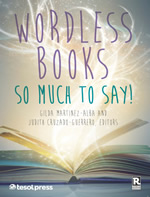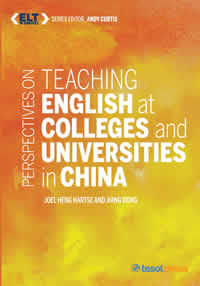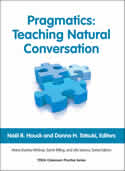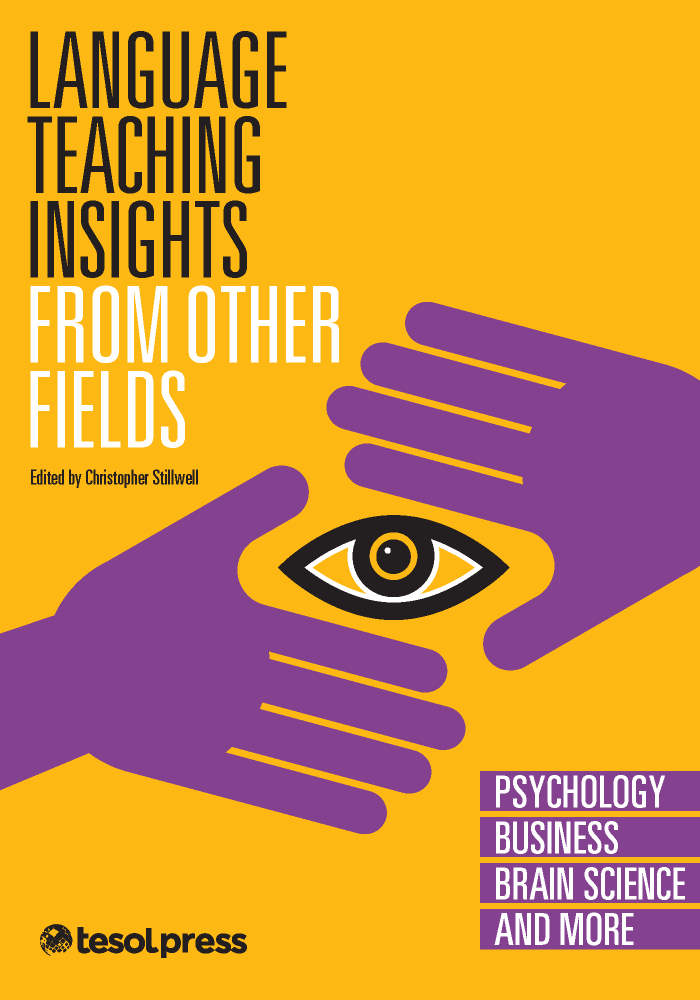Free TESOL Journal Article: Developing Idiomatic Competence in the ESOL Classroom: A Pragmatic Account
John I. Liontas
This article first appeared in TESOL Journal, Volume 6, Number 4, pgs. 621–658. TESOL members can access all issues for free here. To become a member of TESOL, please click here, and to purchase articles, please visit Wiley-Blackwell. © TESOL International Association.
|
Abstract
Building on previous theoretical constructs and empirical findings on idioms, this article advances an integrated theoretical and methodological framework for developing idiomatic competence in English for speakers of other languages (ESOL). Beginning with a definition of the term idiomatic competence, the author then presents a framework of theory and pedagogy not to theorize research findings to date but to advocate for learning idioms in an explicit and systematic way befitting natural use in comprehending and producing idioms effectively and appropriately in actual context-sensitive social situations without violating the conventions of social appropriacy. Throughout the explication of this pragmatic account, a series of insights are offered to help readers reexamine their contexts of teaching and pedagogical practices. It is suggested that for idiom instruction to achieve social immediacy, that is, attain communicative reality and social relevance in everyday discourse, the conditions for optimal idiom learning need to be made compatible with and supportive of the way English language learners learn best. The author concludes with implications for practicing and testing idiomatic competence across the curriculum, even at the tertiary level, in a supportive environment that values active, real-life participation and engagement in English language learning both inside and outside the language class.
doi: 10.1002/tesj.230 |
From A to Z and every other idiom in between, idioms have their origins in the fabric of human communication. Peculiar to a language, these forms of expression—from the ancient to the most recent—owe their creation to the inventive workings of human thought and language evolution. They posses extraordinary communicative effectiveness and rhetorical power yet convey complex realities and human behavior with the help of simple but colorful, and very powerful, figures of speech that are to a large extent frozen in time (Cutler, 1982). Each imageable-rich figure, in turn, conveys a meaning that cannot be deduced from the ordinary meanings of the words in it, that is, from the dictionary definitions of the individual words comprising it. The sum total of an idiom's individual parts as in to + take + the + bull + by + the + horns does not lead one to the figurative meaning of that idiom (to take decisive action in a difficult situation). Said simply, an idiom does not mean what it literally states. To infer its figurative meaning, reading between the lines becomes obligatory despite the blurred lines from time to time. Understanding this process of idiomatic transition has resulted in a great many empirical investigations and pedagogical discussions.
Despite all the emerging theoretical accounts of idioms to date, little attention has been paid to teaching and learning idioms in the English for speakers of other languages (ESOL) classroom, anecdotal evidence aside. Developing idiomatic competence among English language learners (ELLs) remains a formidable challenge still. Addressing this challenge, this article advances an integrated theoretical and methodological framework for developing idiomatic competence in the ESOL classroom and beyond. Central to this enterprise is the description of how the information presented herein can be translated into specific pedagogic propositions worth pursuing. To this end, I first present ESOL practitioners with valuable insights, which they can then use to reach curricular decisions befitting their particular classroom context. This provides a position from which the consequences of much research effort and interpretation may yet be clarified and translated into best teaching practices. Where appropriate, gaps in research efforts are appraised and discussed. Finally, I summarize the nature of the above into eleven evaluative measures in an effort to validate learners' concerted attempts at developing idiomatic competence, albeit in different frameworks and with different levels of success.
The overall aim of this article, therefore, is not to provide a unitary framework of theory and pedagogy, but rather to ponder the descriptive information deemed pertinent in testing the waters of said pragmatic account. Throughout, it will be argued that, as learners move through higher levels of education and proficiency, instruction must encourage students to learn idioms in a more explicit and systematic way than presently applied if they are to correctly develop idiomatic competence in the English language and culture.
continued...
This article first appeared in TESOL Journal, 6, 621–658. For permission to use text from this article, please go to Wiley-Blackwell and click on "Permissions" under "About This Journal."
doi: 10.1002/tesj.230
TC Monthly Giveaway Congratulations to Dinorah Sapp, of Oxford, Mississippi, USA for being the winner of the December 2015 TESOL Connections Monthly Giveaway. Dinorah has won a free TESOL membership renewal.
This month, TESOL is giving away
a free copy of
Wordless Books: So Much to Say!

Enable your students to be successful regardless of their literacy levels. Wordless books help to develop oral language, listening, vocabulary, and so much more! With wordless books, K–12 and adult students can be authors and write stories that they interpret from the pictures. In addition, the lesson ideas are aligned with the Common Core State Standards for English Language Arts and with the TESOL Pre-K–12 English Language Proficiency Standards. Sample rubrics are included in the book and online as editable documents.
Click here to enter
Drawing closes 24 February 2016, 11:59 pm EST
TESOL Blogs Interested in writing a blog for TESOL?
Read the submission guidelines and send us your post!
Check out the latest TESOL Blogs:
|
Charting a Course Through Graphs, Charts, and Other Organizers, by Nathan Hall
 If your school is like mine, your administrators are constantly evaluating various data to give everyone something to discuss on the in-service days. All of these facts gets condensed into an easy graphic with lines, bars, or fractionally divided slides presented on a PowerPoint and projected or passed out on handouts. All it takes is a little explanation and we can get a snapshot of what’s happening and where it’s headed. If your school is like mine, your administrators are constantly evaluating various data to give everyone something to discuss on the in-service days. All of these facts gets condensed into an easy graphic with lines, bars, or fractionally divided slides presented on a PowerPoint and projected or passed out on handouts. All it takes is a little explanation and we can get a snapshot of what’s happening and where it’s headed.
While it’s easy to take for granted that graphic organizers are easy alternatives to large chunks of text, we have to remember that these could be very confusing to ELLs. Other cultures may not use the same layouts we use, different schools the students previously attended may not have incorporated these into the curriculum, or the whole process of how to make sense of weird words and lines may be overwhelming. So, as ELL teachers, we may want to take the time to go over how charts and graphs work as a part of academic language.
Some ways to make this happen are to: Read More. |
|
In Defense of the 5-Paragraph Essay, by Robert Sheppard
 In a recent post over at Talks With Teachers, Brian Sztabnik puts a price on the head of the 5-paragraph essay. Torch it, bury it, at all costs, make it go away. Why this bounty? Well, the gist of the argument is that, of all the great writing we read, virtually none of it is in the form of a 5-paragraph essay. The primary goal of education, says Sztabnik, is “to cultivate young minds to be thoughtful, versatile, and never satiated.” It’s a good post, and even better is the follow-up, which proposes authentic writing as an alternative. In that second post, nine teachers share what authentic writing means to them, along with a favorite authentic writing assignment. There are some fantastic ideas there, and I highly recommend reading both. In a recent post over at Talks With Teachers, Brian Sztabnik puts a price on the head of the 5-paragraph essay. Torch it, bury it, at all costs, make it go away. Why this bounty? Well, the gist of the argument is that, of all the great writing we read, virtually none of it is in the form of a 5-paragraph essay. The primary goal of education, says Sztabnik, is “to cultivate young minds to be thoughtful, versatile, and never satiated.” It’s a good post, and even better is the follow-up, which proposes authentic writing as an alternative. In that second post, nine teachers share what authentic writing means to them, along with a favorite authentic writing assignment. There are some fantastic ideas there, and I highly recommend reading both.
But there’s a but, or, rather, a however. You knew it was coming. And here it is: Read More. |
|
5 Sources of Support for New TESOL Teachers, by Kristen Lindahl
 In my previous blog entry, I posed some ideas for helping future TESOL teachers transition from the role of student to teacher. To follow up on that, I focus this entry on the next step: how to support those new TESOL educators once they are in the workforce and heading up their own classrooms. In my previous blog entry, I posed some ideas for helping future TESOL teachers transition from the role of student to teacher. To follow up on that, I focus this entry on the next step: how to support those new TESOL educators once they are in the workforce and heading up their own classrooms.
Below are five online resources that focus on providing support for new teachers in different ways: the first two are sites that provide both classroom tools and online communities to help out new teachers; the third is a letter by a teacher to teachers to help them imagine their future. Read More. |
|
3 New Year’s Activities, by Elena Shvidko
 Happy New Year! It’s a great time to start a new semester with a holiday-related activity that would help your students to get to know each other and practice English. I thought I would share a few activities that you could do during the first week of classes. Happy New Year! It’s a great time to start a new semester with a holiday-related activity that would help your students to get to know each other and practice English. I thought I would share a few activities that you could do during the first week of classes.
Activity 1. Collage: The Year in Review
For this activity, you should have 1) several magazines and other periodicals with pictures, 2) scissors, 3) glue, and 4) papers (format A4) according to the number of the students. Each student will receive each of the above materials. The task is to create a picture collage—a personal overview of the previous year in pictures, that is, major activities and events, interesting stories, and highlights. Read More. |
TESOL Bookstore

Featured Resources from TESOL Press
 Perspectives on Teaching English at Colleges and Universities in China Perspectives on Teaching English at Colleges and Universities in China
Joel Heng Hartse and Jiang Dong
Co-authored by a Chinese teacher of English in China and an American teacher of English who worked in China, this text is a powerful example of international collaboration and highlights one of the distinctive features of the ELT in Context Series.
 Pragmatics: Teaching Natural Conversation Pragmatics: Teaching Natural Conversation
Donna H. Tatsuki and Noël R. Houck
This text offers materials and techniques for guiding learners past grammar into authentic-sounding utterances and sequences. Teachers will find a range of pedagogical activities to put to immediate use in the classroom as students learn to move past the scripted unnatural dialogue provided in traditional textbooks. Includes additional online resources.
 Language Teaching Insights From Other Fields: Psychology, Business, Brain Science, and More Language Teaching Insights From Other Fields: Psychology, Business, Brain Science, and More
Christopher Stillwell
What could language teachers learn from neuroscientists, economists, and a myriad of other professionals? This book explores and seeks inspiration from beyond routine contexts. The chapters, written by language teachers with extensive experience in other fields, yield surprises that translate to new ways of thinking about teaching and the classroom. Language teachers who open this book tap into a living library of their colleagues' knowledge and experiences.
|
| ADVERTISEMENT |
 |
 |
|